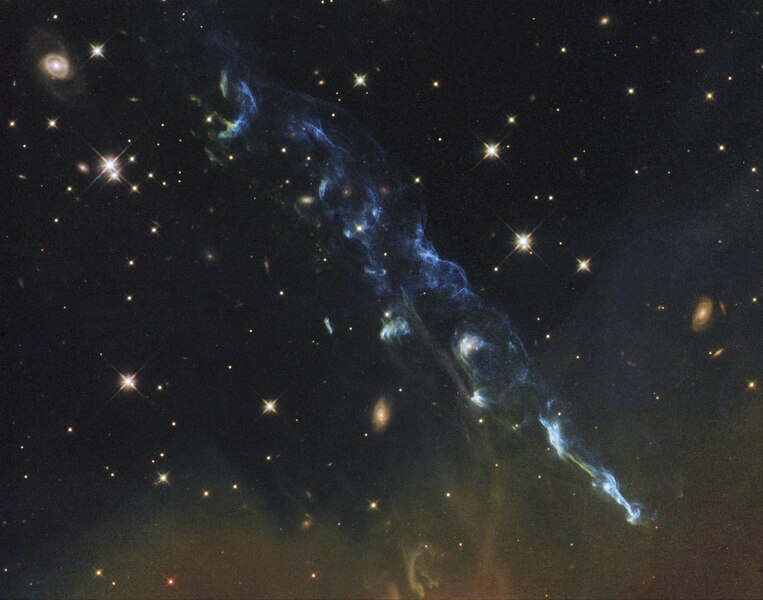File:Herbig-Haro 110 (captured by the Hubble Space Telescope).tif
外观

此TIF文件的JPG预览的大小:763 × 600像素。 其他分辨率:305 × 240像素 | 611 × 480像素 | 977 × 768像素 | 1,280 × 1,006像素 | 2,560 × 2,012像素 | 3,883 × 3,052像素。
原始文件 (3,883 × 3,052像素,文件大小:26.63 MB,MIME类型:image/tiff)
文件历史
点击某个日期/时间查看对应时刻的文件。
| 日期/时间 | 缩略图 | 大小 | 用户 | 备注 | |
|---|---|---|---|---|---|
| 当前 | 2012年7月8日 (日) 11:53 |  | 3,883 × 3,052(26.63 MB) | Prof. Professorson | {{Information |Description=en:Herbig-Haro 110 is a geyser of hot gas from a newborn star that splashes up against and ricochets off the dense core of a cloud of molecular hydrogen. Although the plumes of gas look like whiffs of smoke, they are ac... |
文件用途
以下页面使用本文件:
全域文件用途
以下其他wiki使用此文件:
- en.wikipedia.org上的用途
- en.wiktionary.org上的用途
- fa.wikipedia.org上的用途
- gl.wikipedia.org上的用途
- mk.wikipedia.org上的用途
- pl.wikipedia.org上的用途
- tr.wikipedia.org上的用途

